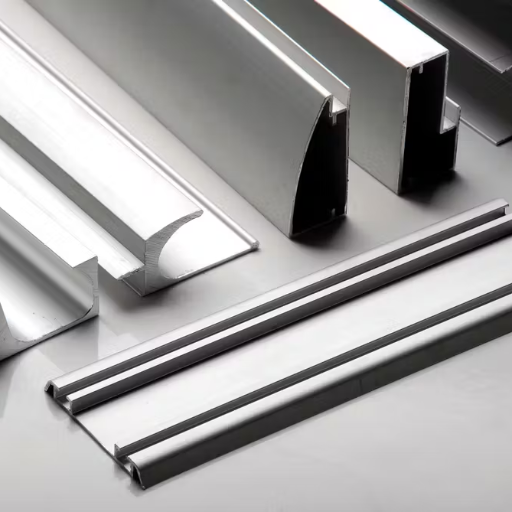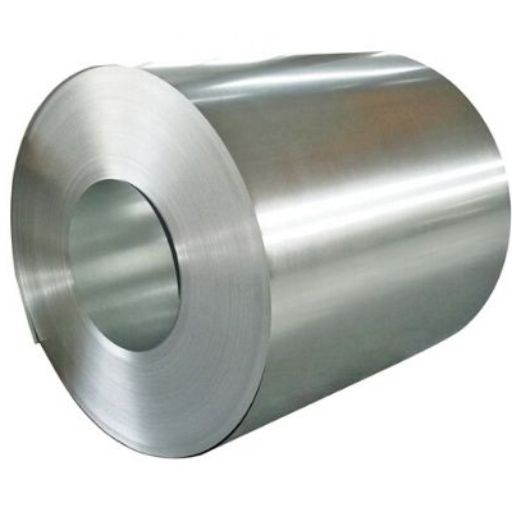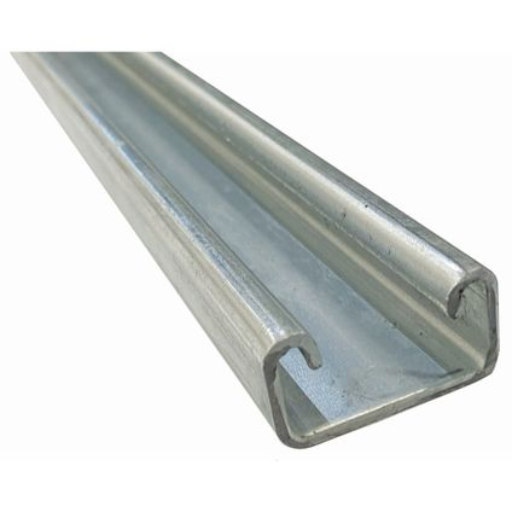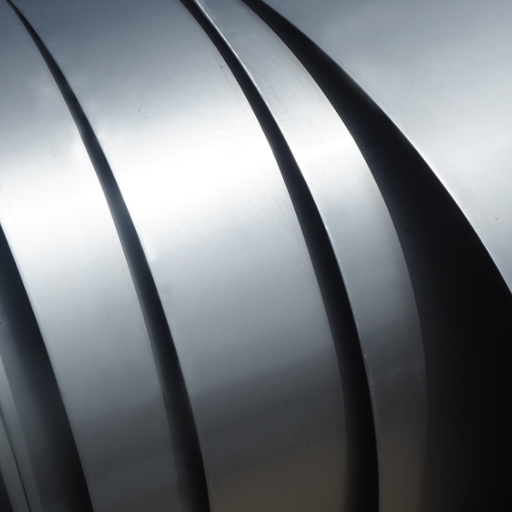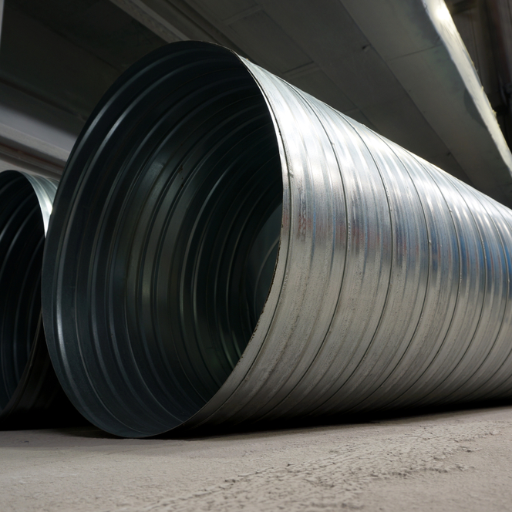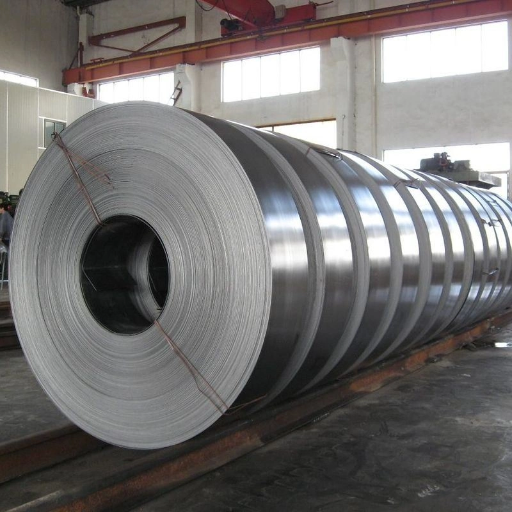Galvanised steel and aluminium are the two leading materials in the quest for determining appropriate materials for construction and manufacturing projects due to their resilience and versatility. Each of them has certain benefits as well as drawbacks arising from durability and strength that make it acceptable for usage in various situations. The aim of this article is to explore the core dissimilarities between galvanised steel and aluminium, considering composition, corrosion resistance, strength-to-weight ratio, cost effectiveness. This knowledge can be helpful to builders, engineers or hobbyists in deciding whether they should choose one over another with regard to their projects’ specifics or available funds – be it architectural works, vehicles made by different manufacturers or household items.
What Are the Key Differences Between Galvanised Steel and Aluminium?
Corrosion Resistance of Aluminum and Galvanized Steel
To me, it is quite interesting to compare the corrosion resistance of aluminum and galvanized steel. Because when exposed to air, aluminum naturally forms a protective layer of oxide that prevents any further corrosion. This feature makes it last long in highly corrosive environments like residential places near oceans.
On the other hand, galvanized steel which is a zinc coated steel also has improved corrosion resistance. Zinc serves as a barrier between the steel and its surrounding. In case of moisture presence the zinc corrodes before steel thus protecting from rusting. However, if huge portions of zinc are removed or become damaged then steel will start rusting.
In my opinion both materials have their own plus points in terms of resisting corrosion but the choice between them should largely depend on specific environmental conditions and intended use(s) of the product.
Considerations about Steel vs Aluminum Weight and Strength
When weight and strength are being discussed with respect to steel and aluminium, one must take into account what these materials can offer in terms their uses among others; this is why I believe that there are few things that make aluminium stand out. It’s density is way lower than other metals making it significantly lighter than other materials available for use. Hence it becomes an ideal material where weight is crucial such as in automotive industry or aerospace since fuel economy as well as ease of handling counts much.
On the other hand, strongness & durability distinguishes steel especially galvanised one from others. It can resist heavy loads & harsh conditions hence very essential for construction & infrastructure projects [like bridges]. Although heavy itself, its strength-to-weight ratio advantageous when more concerned with having stronger material that lasts longer rather than reducing mass.
Choosing between aluminum and galvanized steel depends on how you understand specifications for your project.If reducing weight without considerably compromising strength is paramount then it would be better to go for aluminum.But if maximum strength and durability required particularly in cases where resistance against erosion matters too then choose galvanized steel.
Thermal Conductivity in Aluminium and Galvanized Metal
Selecting appropriate materials for projects involving heat transfer requires a grasp of thermal conductivity in substances like aluminum and galvanized steel. Here’s how I see it with the eyes of an industry expert:
First and foremost, aluminium is well-known for its good thermal conductivity. This quality makes it an ideal choice in areas that need efficient heat dissipation; for example, heat sinks or radiators or other cooling devices. The reason being this is simple – quickly can aluminium conduct heat hence can effectively cool the components.
Another material that can be used is galvanized metal which as the name suggests is just steel with a coating of zinc to protect it from rusting. It does not have as high a level of thermal conductivity as that of aluminum though it has attributes such as resilience and corrosion resistance. Therefore, if you are working on a project that requires material that can withstand tough conditions but at the same time show some degree of thermal conductivity then remember: galvanized steel may not be the best option if compared to aluminum when one looks at them through prism of their ability to transfer heat.
The following parameters should be taken into account when choosing between aluminum and galvanized metal for applications where there is need for transfer of heat:
- Heat Transfer Needs: If your project needs fast and effective dissipation of heat, choose aluminum.
- Environment and Durability: Galvanized metal provides toughness and safeguarding in environments requiring non-corrosive materials, especially those where direct heating isn’t so significant.
- Cost-Effectiveness: As a general rule, aluminum is more expensive than galvanized steel meaning fiscal considerations will play part during decision making process.
- Weight Considerations: In case you want to save weight on your application e.g., aerospace or automotive industries among others, then go for aluminium because its low density makes it light.
In a nutshell, for projects necessitating efficient dissipation of heat through conduction, aluminum stands out in relation to thermal conductivity. However, when durability and corrosion resistance become the key concerns in application selection process, galvanized metal presents a number of benefits though it has relatively lower thermal conductivity. The correct material to use will depend on how these options are weighed against each other in relation to the specific requirements of the project.
How Does Corrosion Affect Galvanised Steel and Aluminium?
Understanding Zinc Coating for Galvanized Steel
From my industry experience, the function of zinc coating in galvanized steel is essential to combat corrosion, one of the most common challenges in metal preservation. Zinc acts as a protective barrier by physically shielding steel but also through an action called cathodic protection. Galvanised steel corrodes first before rusting when it is exposed to moisture because zinc corrodes more readily than steel does. This quality makes galvanized steel an ideal choice for any project that requires long-term sustainability especially if it is for outdoor or wet areas.
However, it’s crucial to recognize that while zinc offers significant protection, its efficacy may depend on environmental conditions. In areas with high salinity or industrial pollution, the life span of a zinc coating can be greatly reduced. Therefore, timely examination and maintenance are more important than ever to prolong the life of a façade.
In conclusion, from where I stand as an expert in this field of industry, zinc coated on galvanized steel is highly effective against corrosion thus extending the life expectancy and maintaining structural integrity of material itself. However, there still should be specific considerations within which this application can be done efficiently.
Aluminum Oxide and Corrosion Resistance
Aluminum naturally forms aluminum oxide layer when it comes into contact with air based on what I have seen and applied in practice hence making it significant for corrosion resistance. This oxide layer is extremely thin yet it provides excellent defense against further deterioration happening beneath the surface of aluminum. Unlike with zinc-coated galvanized steel whereby coating sacrefices itself so as to protect the underlying metal and damage other parts; Aluminum oxide strengthens its defense without degrading.Its resistance to corrosion is particularly notable in environments where harsh chemicals might come into contact with the metal or extreme pH levels exist.Moreover aluminium has unique ability that even if scratched,it ‘heals’ itself by reforming its own oxide layer.This property makes aluminium and consequently aluminium alloys good choices for applications requiring long lifespan with low maintenance especially in aerospace, automotive and construction industries. However, for this feature to be fully utilized the environment as well as conditions under which aluminium is going to be used has to be understood so that it can serve for its intended purpose without developing any defects.
Rust and Corrosion in Metal Materials
Rust and corrode are both common and insidious enemies of metal preservation as per my experience while working within this sector. The oxidation of iron or its alloys like steel, which occurs when they are exposed to moist air for a long period, rusts them. Moisture and oxygen are necessary in an electrochemical process that commences by metallic atoms losing electrons and reacting with water plus oxygen. This is not only detrimental to the aesthetics but also severely compromises the structural integrity of metals thereby posing significant safety hazards and financial implications.Corrosion on the other hand is a more general term that encompasses different metals including not only iron. Each metal responds differently to corrosive attacks hence resulting in a range of countermeasures from coatings/protective barriers through use of corrosion resistant materials up to cathodic protection.Strategic selection of prevention or treatment methods significantly relies on understanding specific corrosion behaviour characterizing a given material.Good knowledge about corrosion mechanism coupled with regular inspection and maintenance practice helps mitigating such risks associated with rusting on metallic objects
Exploring the Thermal Conductivity of Galvanised Steel vs Aluminium
Why Thermal Conductivity Matters for Metal Applications
In the world of metallic applications, thermal conductivity is a very important parameter because it influences how well a material can transfer heat. Knowing their thermal characteristics is essential when considering metals such as galvanized steel and aluminum for any project involving them. Here’s why:
- Efficiency in Heating and Cooling Systems: In those applications which require efficient heat transfer, high conductive materials are desired. This makes aluminium the metal that most often selected for use in radiators, heat sinks and HVAC systems because it conducts heat efficiently to ensure effective functioning of these systems.
- Energy Conservation: For temperature changes to be attained with minimal energy, metals have to conduct heat well. Consequently, through this approach not only do operations use less energy but also minimize costs and environmental impacts.
- Safety and Performance: Efficient heat dissipation in electrical constituents is vital in maintaining safety and durability. Metals like Aluminum cannot be overlooked when it comes to avoiding overheating due to risks of failure or hazards.
- Material Selection for Cooking Utensils: The cooking industry relies heavily on the thermal conductivity of metals. Metal cookware made from metals with high thermal conductivity ensures uniform heating hence no areas where food burns thus making aluminum highly preferred by industries involved in food preparation.
- Support for Structural Integrity: Materials able to rapidly adjust while still remaining intact under varying temperatures are necessary for environments that experience fluctuations in temperature frequently. Constructions and machines can have their lifespan elongated through proper thermal management that enhances their structural integrity.
Thermal conductivity therefore remains an all-important factor guiding various application demands where different types of metal are concerned. Engineers and designers could improve efficiency, guarantee safety, save power and optimize performance across many different sectors by having an understanding about the thermally related qualities of some steels or aluminiums such as galvanised ones’.
Heat Transfer Rates in Aluminum and Galvanized Steel
From my experience in materials engineering, comparing the heat transfer rates of aluminum and galvanized steel is not an exercise in setting one metal against another, but about understanding their distinctiveness and how this can be applied to specific uses. Aluminum has a higher thermal conductivity than other metals; hence, it is more efficient in terms of heat transfer. It therefore becomes an excellent material for applications that require rapid dissipation of heat like those found in cooling systems and high performance electronics. Conversely, galvanized steel exhibits less conductivity but possesses elevated resistance to corrosion as well as durability making it suitable for outdoor use or harsh conditions where longevity and reliability are important considerations. In conclusion, the choice between aluminum and galvanized steel will primarily depend on whether the priority is for efficient heat flow or long lasting structures with immunity to corrosive environments.
Common Applications for Galvanised Steel and Aluminium Sheets
Choosing Between Aluminium and Galvanized Steel for Construction
Mere metal choice between aluminium and galvanized steel in construction ultimately boils down to their comparison of features and the identification of which suits best the specific needs of a project. The following is a plain digestion:
- Weight: In automotive or aerospace constructions for instance, Aluminium is much lighter than galvanized steel, making it an ideal choice when weight is an issue to consider. Additionally, lightweight nature can reduce transport and handling expenses.
- Corrosion Resistance: Their methods may differ but both materials are good at corrosion resistance. Galvanized steel has zinc coating that protects against corrosion while aluminium forms a layer of oxide naturally when it contacts with air hence serving as a rust barrier. Your selection will depend on the type of corrosion in question and environmental conditions if you are in a highly corroded area.
- Costs: Generally speaking, aluminium is more expensive than galvanized steel. However, budget constraints might favor going for a galvanised product but one needs to take into account total lifetime costs including maintenance and longevity.
- Strength: Aluminium is weaker than galvanized steel; conversely, its strength-to-weight ratio makes it suitable for structures needing high strength per unit mass. Thus, though its feather weight gives it advantage in applications where strength matters not much like what we have seen as regards steel applications
- Thermal Conductivity: In fact, thermal conductivity of aluminum is significantly higher than that of galvanized steel making aluminium the better option for situations requiring heat transfer or dissipation such as cooling buildings or electronic heat sinks on roofing materials.
- Aesthetics & Malleability: Aluminium is more malleable compared to galvanized steel and therefore easier to shape; moreover due to smoothness surface provides cleaner look preferred especially where architectural appearance matters most.
In summary, your choice between aluminum and galvanization must be guided by full scrutiny vis-à-vis project specifics involving all aspects listed above. Every material has its own unique advantages and disadvantages hence depending on the application’s specific requirements in terms of strength, weight, resistance to corrosion, thermal conductivity, costs and aesthetic considerations.
Choice between Aluminums Sheets and Galvanized Steel Based on Project Specifics
In my own experience in the industry, what to choose between aluminum sheets and galvanized steel largely depends on your project needs. In cases where weight is the main concern, aluminum sheets are always preferred. Aluminum’s lightweight property therefore has a great advantage to the finished products especially those in the aerospace, automotive or marine industries which want to achieve fuel efficiency and ease of movement.
Moreover, in applications like cooling systems or electronic devices that require efficient heat transfer or dissipation, aluminium beats galvanised steel due to its high thermal conductivity. Its capability for immediate absorption and loss of heat makes it outperform galvanized steel when temperature control is necessary in such environments.
On matters of aesthetics alone, however, one might need plain finishes provided by aluminum sheets only. That together with its higher malleability give it an edge over other materials for use in architectural projects and consumer goods where overall appearance matters most.
Finally, aluminium’s natural resistance towards corrosion gives it an edge over galvanized steel when dealing with corrosive environments or ones in which long-term exposure to elements is anticipated. In addition, its durability under these conditions means that less maintenance would be required during its longer lifespan thereby making it a cost-effective option for such facilities.
Applications That Demand Corrosion Resistance and Light Weight Properties
Based on extensive experience cutting across sectors, I have seen how some applications simply necessitate both corrosion resistance and light weight properties more than anything else. One example is marine equipment. In this case, aluminium’s resistance against seawater corrosion coupled with its lightness enhances life spans as well as performance of vessels including associated infrastructure significantly. On the other hand, materials utilized in architecture within coastal regions should not corrode when subjected to harsh saline environments while allowing for innovative designs that minimize their mass. Likewise, rising demand for lighter motor vehicles that consume less gasoline without compromising their durability has led to significant use of aluminium in such vehicles. When used for vehicle frames, it cuts weight while preventing rust and corrosion thus extending the life span of the car, especially in regions that experience heavy rains or during winter when road salts are used. Consequently, these sectors have seen a shift towards aluminium as users take advantage of its unique properties which, in turn, reshapes their design and manufacturing strategies.
Strength and Weight: Aluminium vs Galvanized Steel
Evaluation of the Aluminium–Steel Strength-to-Weight Ratios
The strength-to-weight ratio is an important property to consider when comparing galvanised steel and aluminium for application where durability and efficiency are both critical. On principle, this ratio defines how strong a material is per unit weight, that is, how much load it can carry before breaking in relation to its own mass.
Aluminum
- Lightness: The aluminum is inherently light – just one-third of the weight of steel. Because of this aspect, it becomes preferable in cases where reducing the overall weight is useful, for example in motor industry or air travel.
- Strength: Aluminum itself may be quite soft but it can be alloyed with other metals to produce much stronger aluminum alloys. These alloys can be designed to display certain mechanical properties such as strength that match specific applications requirements.
Galvanized Steel
- High tensile strength: This type of steel has a high tensile strength which makes it good bye material for use in structures that will bear heavy loads throughout their service life.
- Corrosion resistance: Galvanising adds zinc layers to the steel so as to improve its resistance against corrosion, aiding longevity particularly under corrosive environments, though it also raises its overall mass slightly.
When evaluating between aluminium and galvanized steel materials on the grounds of their strength-to-weight ratio as well as individual application demands they should meet; because this will indicate whether someone needs high-strength but lightweight materials. For instance, although heavier than aluminum, galvanized steel provides significant toughness and corrosion protection appropriate in situations where these factors are more important than low weight. Ultimately choosing either aluminium or galvanized steels depends on balancing these attributes against the requirements of an application.
The case for Lightweight Metals such as Aluminum in some Industries
In manufacturing and construction, material selection is critical to the success of a project. As someone who works in the industry, I have noticed that certain industries now favor lightweight metals like aluminum for several reasons, especially automotive and aerospace. The first reason is that aluminium is inherently light-weight thus contributes significantly to fuel efficiency because it reduces weight complexity of vehicles and airplanes. This results in lower hydrocarbon burning as well as emission of CO2 leading towards more sustainable practices across the world. Moreover, aluminium possesses an excellent strength-to-weight ratio implying that it does not compromise on its strength or durability despite being lightweight. Thus, this becomes vital especially in processes where protection comes first. In addition, aluminium’s corrosion resistance means that products made from it can last longer while remaining dependable even under harsh weather conditions or when exposed to chemicals; thus reducing maintenance costs and extending their service life spans. Lastly aluminum has high recyclability; hence facilitating re-usage of material through saving cost and protecting environment at the same time. For these reasons aluminum is among essential materials utilized by different sectors with regard to its performance rate, eco-friendliness as well as sustainability plus affordability.
Welding Challenges with Galvanised Steel and Aluminium
Safe Methods for Welding Galvanized Steel
Attention must be paid when welding galvanized steel since the zinc coating emits poisonous fumes upon heating. In my experience, following the right procedures can minimize this risk and assure a safe welding exercise. For instance, one is required to work in a well-ventilated room or use local exhaust ventilation to extract fumes from welder’s breathing zone. It is also recommended to use respirators made specifically for welding fumes. The amount of fumes created can be reduced by pre-cleaning the weld area so as remove as much zinc coating as possible. While welding, some of the ways like using lower currents and greater speeds of welding can reduce vaporization of zinc. Moreover, the choice of filler metals should not only be strong but also compatible with galvanized steel to ensure that there are no corrosive welds. Therefore these practices will substantially minimize health risks while working with galvanized steel.
Understanding Aluminum Welding Techniques
Welding aluminum is demanding; it has its own challenges and particular techniques used for creating firm and long-lasting joints. From my understanding in this field, successful aluminum welding centers on its unique characteristics. This means that heat input needs to be controlled carefully because aluminum has higher thermal conductivity than its alloys hence low melting point which causes warping or burn-through if not closely monitored. Pre-weld cleaning is important; removing aluminium oxide layer before welding improves weld quality because it melts at higher temperatures than aluminum itself.
Cracking behavior in aluminum can however be counteracted by ensuring that filler material is chosen correctly especially when conducting any such activity. Also select the suitable type of welding process necessary as it may vary depending on the filling mode among others.One method normally preferred for dealing with aluminium entails TIG due to its benefits including precision and control leading to minimal heat input hence very clean welds.MIG on the other hand may still work well particularly when dealing with thicker sections, only when the use of right type of wire and shielding gas is made.
It is important to maintain a clean work place and equipment when welding aluminum in order to avoid contamination that can lead to poor quality welds. With these practices one can achieve strong high quality aluminum welds even with its inherent challenges; this has been shown by my experience.
Steel vs Aluminum Material Properties and Weldability
Obviously, comparing the weldability properties and material between steel and aluminum shows that each metal has its own unique welding challenges as well as advantages. Unlike aluminum, steel welding processes are somewhat forgiving since it is stronger and has a higher melting temperature. Its reliability stems from its predictability as it behaves uniformly under the heat of a torch or gun used for welding. Steel however if not treated or coated properly after welding will corrode hence additional steps in welding are necessary.
In contrast, welding aluminum requires a more refined approach because of its low melting point and high thermal conductivity. Some of the weaknesses related to heat have to be avoided during the process which include warping or burn-through therefore precise control over them should be maintained. For instance, formation of an oxide layer on aluminum’s surface though protective against corrosion hinders proper welding process since it has to be removed so as to obtain a clean strong weld. Once mastered however, lightweight but highly durable structures found in industries like aerospace, automotive and marine become achievable through aluminum joining techniques.
As an industry specialist, I consider the basic disparities in material characteristics between steel and aluminum essential. It is important, therefore, that one understands these differences so that correct welding techniques and materials can be used for high quality durable welds designed for each metal’s specific properties and applications.
Reference sources:
1. Online Article: “Galvanized Steel vs. Aluminum: Which Should You Use?” – Metal Supermarkets
- Source: Metal Supermarkets
- Summary/Annotation: This article from Metal Supermarkets provides a detailed comparison of galvanized steel and aluminum, focusing on their properties, advantages, and typical applications. It highlights key characteristics of galvanized steel, such as its superior corrosion resistance due to the zinc coating, high strength, and cost-effectiveness, making it ideal for construction and outdoor applications. Aluminum is noted for its lightweight nature, excellent corrosion resistance, and versatility in applications like automotive parts, aerospace, and consumer goods. Metal Supermarkets is a reputable supplier of small-quantity metals, ensuring the content is accurate and well-researched. This source is valuable for readers seeking practical insights into which material is better suited for specific projects based on performance criteria.
2. Academic Journal: “Comparative Analysis of Mechanical Properties and Corrosion Behavior of Galvanized Steel and Aluminum Alloys” – Journal of Materials Science & Technology
- Source: Journal of Materials Science & Technology
- Summary/Annotation: Published in the Journal of Materials Science & Technology, this peer-reviewed paper examines the mechanical properties and corrosion behavior of galvanized steel and aluminum alloys. The study provides experimental data on tensile strength, toughness, and resistance to various corrosive environments. It also explores the impact of different environmental conditions on the longevity and durability of each material. As an academic journal, this source offers high credibility and technical depth, making it essential for readers interested in a rigorous scientific understanding of the comparative advantages and limitations of galvanized steel and aluminum in different applications.
3. Manufacturer Website: “Material Selection Guide: Galvanized Steel vs. Aluminum” – Continental Steel & Tube Company
- Source: Continental Steel & Tube Company
- Summary/Annotation: Continental Steel & Tube Company’s website offers a comprehensive material selection guide comparing galvanized steel and aluminum. The site features technical data sheets, chemical compositions, and application examples for each material. It highlights the strengths of galvanized steel, such as its robustness and protective zinc coating, making it suitable for harsh environments, while noting aluminum’s lightweight, non-rusting properties, and suitability for applications requiring weight reduction. Continental Steel & Tube Company is a leading supplier of metal products, ensuring authoritative and practical insights. This source is crucial for engineers and designers seeking reliable information on selecting the best material for their specific needs, taking into account factors like strength, weight, cost, and environmental exposure.
Frequently Asked Questions (FAQs):
A: What is the main difference between aluminum and galvanized steel?
The primary discrepancy in composition and quality of material separates aluminum from galvanized steel. It is a lightweight metal with low density, which has high resistance to corrosion and can develop an oxide that is protective. Conversely, galvanized steel is carbon steel that has been dipped into molten zinc for greater resistance to corrosion. The process does not change the properties of the parent material but adds a protective layer against corrosion.
Q: How does aluminum’s durability compare with that of galvanized steel?
Both materials are known for their durability although they differ in terms of their susceptibility to corrosion. Aluminum possesses an inherent ability to resist rust by naturally forming on its surface a thin film of oxide. Likewise, Galvanized steel is longer lasting due to the fact that it contains an extra layer of zinc preventing salt water from coming into contact whit it. If there is any penetration of the zinc coating, zinc will corrode away thus expose the underlying iron or carbon dissipating as well corrode it away while thus exposing the underlying iron or carbon. In general, aluminum tends to last much longer than galvanized steel does when put under corrosive conditions on a long term basis.
Q: Which of these metals is preferable for use outdoors; Aluminum or Galvanized Steel?
It depends on factors such as specific environmental conditions and design criteria when it comes to choosing between using either aluminum or galvanized steel for external purposes. When applied in environments with higher moisture content or exposed to salt water, aluminum performs better due to excellent resistance towards corrosion exhibited in this case. On the other hand,galzanized steel can be used externally where less corrosive elements act upon it and additional strength or toughness may be necessary.Generally speaking both have been widely employed in construction though instances exist when certain locations require aluminium over its counterpart.
Q: Is aluminium used in construction alongside Galvanised Steel?
Definitely, both aluminum and galvanized steel are used widely in construction for different purposes due to their strength and long lasting nature. Aluminum is light weight hence making it suitable for cladding, roofing and structural applications where weight is a critical design concern. Galvanized steel is characterized by impressive strength and durability, which make it ideal for framing, support structures and roofs where the corrosion resistance of the material will be sufficient. The decision between the two often depends on specific needs of the particular project such as load bearing capacity of structure or area exposure to elements.
Q: Can you use aluminum with galvanized steel?
A: Theoretically one can combine aluminum and galvanized steel, though in general, this is ill-advised without taking the necessary precautions due to danger of galvanic corrosion. When the two dissimilar metals come into contact within an electrolyte (such as water), there may be a case of galvanic corrosion where the less noble metal (that is, the galvanized steel) corrodes at a faster rate than it would have done alone. To prevent that, it could be made possible through barriers such as special coatings or insulating materials that separate these two metals.
Q: Which one has better conductivity – aluminum or galvanized steel?
A: Aluminum is more electrically and thermally conductive than galvanized steel because its inherent metallic characteristics are such that there is reduced resistance to flow of electrical current and heat energy. For this reason, most applications requiring efficient heat exchange or electrical conductivity often involve alloys of aluminum but not those of zinc-coated steel. Therefore, choosing between any of these substances for thermal or electrical purpose will depend upon factors like the extent to which it allows electrons to pass through them and whether they corrode easily under specific circumstances tying back to environmental conditions.
Q:Is there a difference in cost between using aluminums and using galvanized steels?
A: Normally yes there is a cost difference between aluminiums compared with steels especially if we factor in that aluminium costs more per unit than iron due to its refining process among other characteristics. However, when deciding on either material for a project, total cost will also depend upon their application as well long-term maintenance requirements. Although initial costs may be lower for projects whose needs match up with what this type offers; however due to superior properties and low upkeep needs over time aluminum might prove cheaper than its counterpart particularly when used in areas prone to high levels of rusting afterward leading toward the fourth paragraph.


